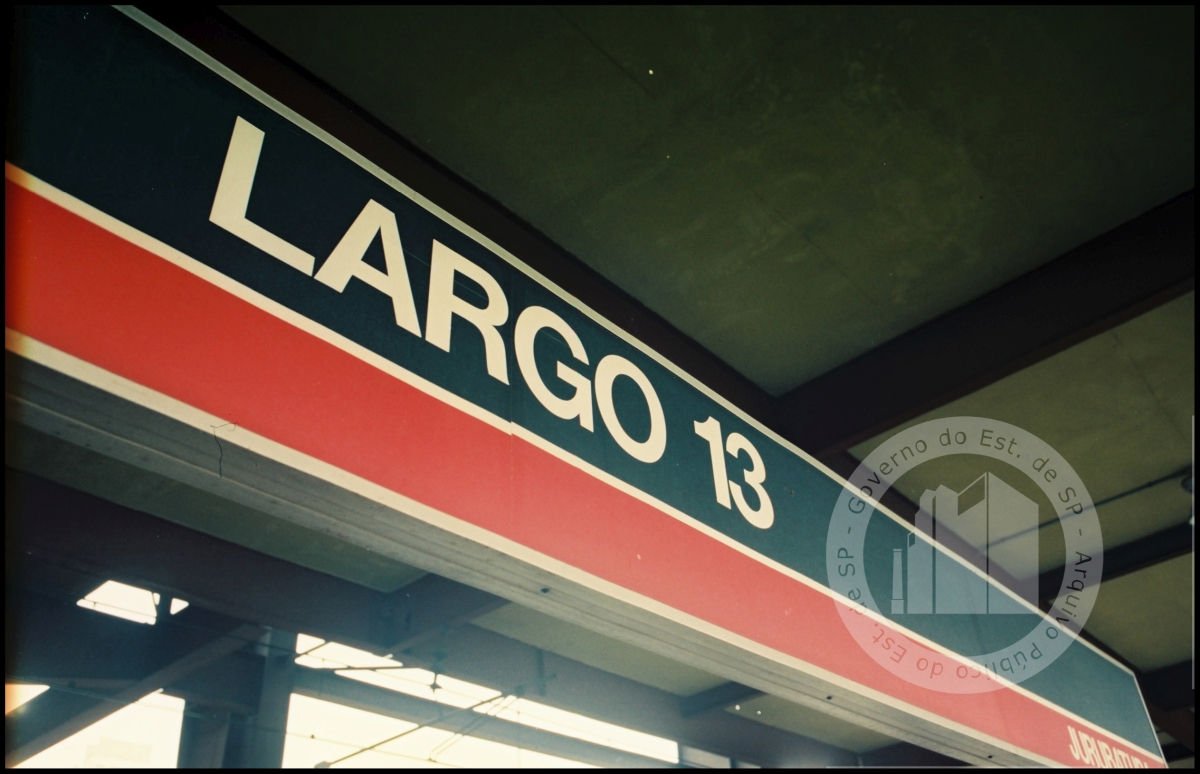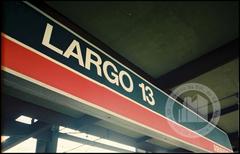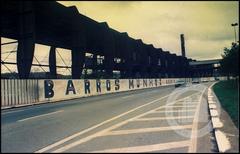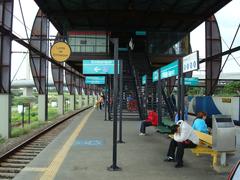
Santo Amaro, São Paulo, Brazil: Visiting Hours, Tickets, and Historical Sites Guide
Date: 14/06/2025
Introduction to Santo Amaro’s Historical and Cultural Significance
Located in the southern zone of São Paulo, Santo Amaro is a district renowned for its rich historical legacy and vibrant cultural life. Once a rural parish, today Santo Amaro is a dynamic urban neighborhood that beautifully blends colonial-era architecture, bustling markets, green spaces, and a multicultural community. Its story is one of transformation—from indigenous lands to Jesuit missions, immigrant settlements, and industrial development—making it a fascinating destination for travelers seeking to understand São Paulo’s evolution (Santo Amaro Cultural; capital.sp.gov.br; Wikipedia: Santo Amaro).
This guide offers detailed insights into Santo Amaro’s historical sites, visiting hours, ticketing information, and practical travel tips—equipping you to explore the district’s most significant landmarks, festivals, culinary highlights, and unique experiences.
Table of Contents
- Introduction
- Historical Overview
- Practical Information for Visitors
- Major Landmarks and Cultural Highlights
- Frequently Asked Questions (FAQs)
- Visuals and Media
- Internal and External Links
- Conclusion and Recommendations
- References
Historical Overview
Early Settlement and Colonial Foundations
The area that is now Santo Amaro was originally inhabited by the indigenous Guaianases people along the Jeribatiba River. In the mid-16th century, Jesuit missionaries established the first Christian presence, building the Igreja de Nossa Senhora da Conceição do Ibirapuera in 1554. This early religious and educational activity, led by figures such as Manuel da Nóbrega, laid the foundation for a diverse and enduring community (Santo Amaro Cultural; capital.sp.gov.br).
Strategically located along the Caminho de Virapuera, the area attracted Portuguese colonists, indigenous groups, and later, African slaves. Land grants (sesmarias) and agricultural development further spurred settlement.
Parish Formation and Community Growth
Santo Amaro became an official parish on January 14, 1686—the second in São Paulo city and fourteenth in the state (Santo Amaro Cultural). The construction of the first chapel dedicated to Santo Amaro, Abade (Saint Maurus), was pivotal for community life. João Pais and Suzana Rodrigues, early benefactors, donated land for the church, and the imported image of Santo Amaro from Portugal became a revered symbol.
The parish center relocated from the riverbanks to higher ground in the early 17th century to avoid flooding, leading to the establishment of the current Catedral de Santo Amaro.
Economic and Industrial Development
Agriculture—including sugarcane, coffee, and livestock—dominated Santo Amaro’s early economy. A notable milestone was the creation of a small ironworks in 1607, one of the earliest in the Americas (Santo Amaro Cultural). Over time, Santo Amaro grew into a rural municipality, serving as a vital supplier for São Paulo and surrounding areas (Wikipedia: Santo Amaro).
Urbanization and Modern Identity
Gaining municipal autonomy in the 19th century, Santo Amaro saw the development of markets, schools, and civic buildings. The Mercado Municipal de Santo Amaro, opened in 1958, remains central to the district’s commercial life (Acesso Cultural). The area experienced rapid urbanization in the 20th century and was officially incorporated into São Paulo in 1933, marking its transition from rural outpost to metropolitan district.
Cultural Traditions and Multicultural Heritage
Santo Amaro’s identity is shaped by indigenous, African, and European influences, reflected in its festivals, cuisine, and artistic expressions. The Catedral de Santo Amaro is a focal point for religious and community events, while annual festivals like the Festa de Santo Amaro (January) and Festa Junina (June) draw crowds for their vibrant processions, music, and traditional foods (saopaulosecreto.com; eventbrite.com).
Practical Information for Visitors
Visiting Hours and Ticket Information
- Catedral de Santo Amaro: 8:00 AM–6:00 PM, daily. Free admission.
- Mercado Municipal de Santo Amaro: Monday–Saturday, 6:00 AM–6:00 PM. Free entry.
- Museu Histórico da Fortaleza de Santo Amaro da Barra Grande: Tuesday–Sunday (check Museum Run for current hours). Tickets available on-site and online; discounts for students, seniors, and groups.
- Alfa Theater: Shows year-round with ticket purchase required (alfateatro.com.br).
- Prestes Maia Library: Monday–Friday, 9:00 AM–6:00 PM. Free admission.
Many festivals and street events are free, while guided tours and special events may require advance booking.
Transportation and Accessibility
- Metro: Line 5 (Lilac) serves Santo Amaro, connecting directly to Largo 13 de Maio and other attractions.
- Bus: Numerous lines from central São Paulo and adjoining districts.
- Train: CPTM Line 9–Esmeralda stops at Santo Amaro Station.
- Accessibility: Major sites like the cathedral and Sesc Santo Amaro offer wheelchair access. Confirm specific needs on venue websites.
Guided Tours and Special Events
Free and paid walking tours are available, highlighting Santo Amaro’s history, architecture, and culture (sympla.com.br). January and June are ideal for experiencing local festivals.
Nearby Attractions
- Ibirapuera Park: São Paulo’s largest park, a short drive away.
- São Paulo Zoo and Botanical Garden: Both easily accessible from Santo Amaro (São Paulo Secreto).
- Vila Mariana: A neighboring district known for arts and nightlife.
Major Landmarks and Cultural Highlights
- Catedral de Santo Amaro: Historical and spiritual heart of the district (Santo Amaro Cultural).
- Mercado Municipal de Santo Amaro: A hub for local food, produce, and artisanal goods.
- Museu Histórico da Fortaleza de Santo Amaro da Barra Grande: Colonial-era fortress and museum (Museum Run).
- Largo 13 de Maio: Commercial and transit center of Santo Amaro (Encontra Santo Amaro).
- Alfa Theater: Premier venue for performing arts (alfateatro.com.br).
- Sesc Santo Amaro: Cultural and recreational center with sports, food, and regular events.
- Parque Severo Gomes: Urban green space with playgrounds, trails, and native vegetation.
- German Heritage Sites: Traces of European immigrant architecture.
Frequently Asked Questions (FAQs)
Q: What are the visiting hours for Santo Amaro’s main attractions?
A: Most sites are open from 8:00 AM to 6:00 PM; specific venues like the museum or theater may have different schedules. Always check ahead online.
Q: Are guided tours available?
A: Yes, both free and paid tours are offered by local agencies and cultural organizations.
Q: How do I get tickets for the Alfa Theater and Museu Histórico?
A: Tickets can be purchased online via their official websites or on-site.
Q: Is Santo Amaro accessible for visitors with disabilities?
A: Major attractions are accessible, though some historic sites may have limitations.
Q: When is the best time to visit?
A: January (Festa de Santo Amaro) and June (Festa Junina) are highlights for festivals. Spring and autumn offer pleasant weather.
Visuals and Media
- [Insert photographs of Catedral de Santo Amaro, Mercado Municipal, and Largo 13 de Maio, with alt text such as “Catedral de Santo Amaro São Paulo”, “Mercado Municipal Santo Amaro interior”, and “Largo 13 de Maio commercial center”.]
- [Embed an interactive Santo Amaro map highlighting attractions and transit routes.]
- [Link to virtual tours provided by local tourism boards.]
Internal and External Links
For more on São Paulo’s cultural districts and historic landmarks, visit our guides on São Paulo Historical Landmarks and Cultural Tours in São Paulo.
External resources for planning your visit:
Conclusion and Recommendations
Santo Amaro stands as a vibrant testament to São Paulo’s layered history and multicultural vitality. Visitors can enjoy the district’s unique blend of colonial heritage, modern amenities, and diverse cultural events. With easy transportation, free or affordable admission to major sites, and a welcoming community spirit, Santo Amaro is ideal for anyone seeking to explore both the history and contemporary life of Brazil’s largest city.
Travel Tip: Use the Audiala app for real-time updates, guided tours, and insider recommendations on Santo Amaro’s top attractions, visiting hours, and ticketing options.
References and Further Reading
- This article draws from verified local and government sources as well as cultural organizations to provide accurate and up-to-date information. For further details, see:






































































































































































